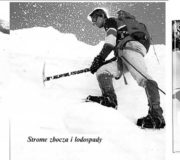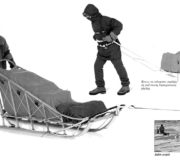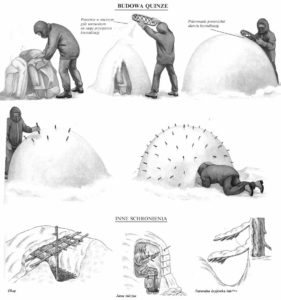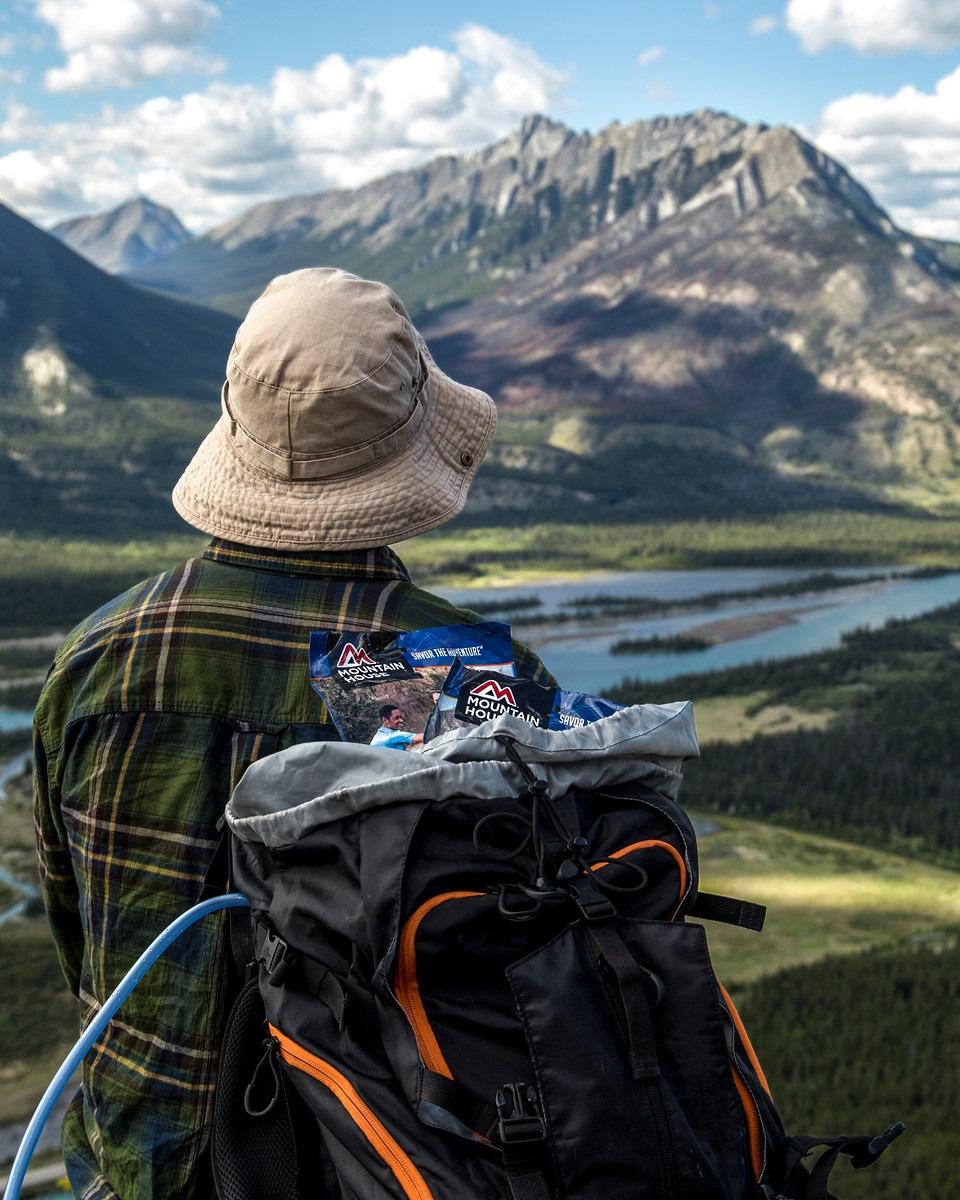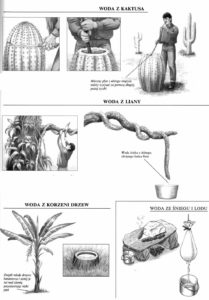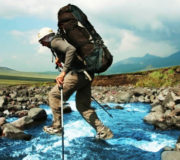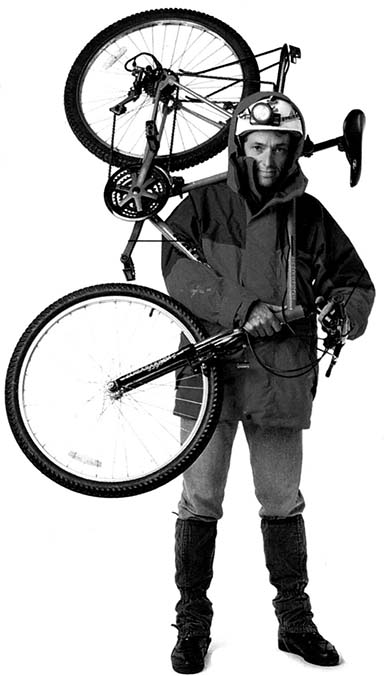Niebezpieczeństwa czyhające w zaśnieżonym lub oblodzonym terenie wynikają zarówno z jego ukształtowania oraz trudności w chodzeniu, jak i dokuczliwego zimna. W warunkach polarnych większym problemem niż utrzymanie ciepła jest uniknięcie pocenia się. Wyruszając na zaśnieżone lub oblodzone trasy wysokogórskie albo w rejony polarne trzeba mieć odpowiedni sprzęt i kondycję fizyczną. Poruszanie się w śniegu i lodzie również w strefie umiarkowanej jest bardzo trudne i niebezpieczne. Bez odpowiedniego przygotowania i dobrego planu lepiej nie podejmować wypraw po zaśnieżonych bezdrożach.
STRÓJ I WYPOSAŻENIE
Dokuczliwe zimno panujące w krajach polarnych i wysokich, pokrytych wiecznym śniegiem górach, wymaga odpowiedniego ubioru. Poruszanie się w śniegu lub lodzie umożliwia zaś specjalistyczny sprzęt – narty czy rakiety śnieżne. Do pokonania groźnych lodowców niezbędne są używane przez alpinistów czekany i młotki lodowe. Ubierając się grubo należy pamiętać o konieczności wentylacji i chłodzenia się, żeby uniknąć spocenia czy przegrzania. Dlatego wierzchnie okrycie powinno mieć zamki błyskawiczne. Najlepiej na wielkie chłody ubierać się na cebulę. Bardzo niskie temperatury i lodowate, wdzierające się w każdą szparę, wiatry zmuszają do osłaniania najmniejszych nawet skrawków skóry, żeby uniknąć groźnych odmrożeń. Niezwykle ważnym elementem wyposażenia polarnika bądź alpinisty są gogle, chroniące przed ślepotą śnieżną.
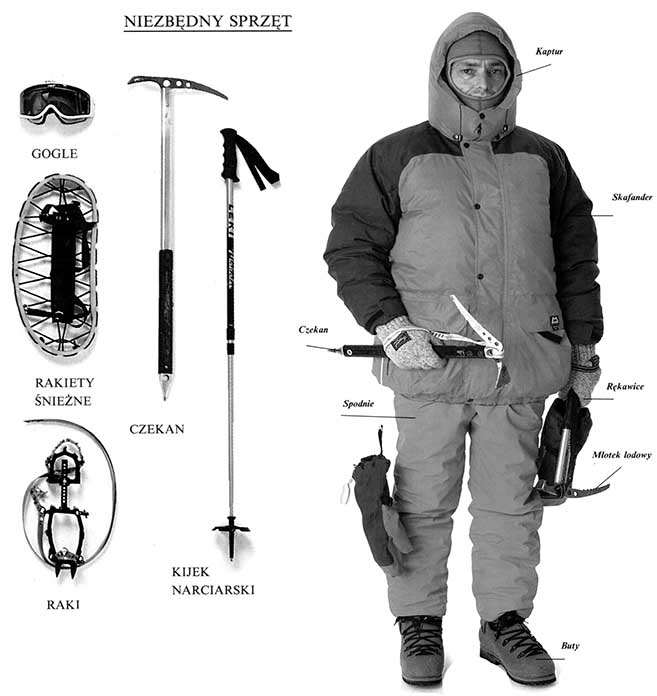 Na zimno, śnieg i lód
Na zimno, śnieg i lód
Jeśli wybieramy się na górskie lodowce lub w regiony polarne ubiór powinien składać się z kilku warstw. Między każdą warstwą jest powietrze, które znakomicie izoluje ciało przed zimnem.
Czekan
Wykuwa się nim stopnie w twardym lodzie. Służy również do asekuracji, a w razie upadku można nim hamować poślizg na lodzie.
Spodnie
Na spodnie bądź ogrodniczki wciąga się dodatkowo ocieplane spodnie ortalionowe. Powinny mieć one suwaki na rozporku i z tyłu, aby w razie potrzeby nie trzeba było ich zdejmować.
Kaptur
Musi być na tyle szeroki, aby zasłaniał również częściowo twarz. Na głowę trzeba założyć też ciepłą czapkę.
Skafander – Kurtka
Powinien zapewniać ochronę przed wiatrem, a zarazem umożliwiać oddychanie. Musi być również na tyle obszerny, aby można było założyć pod niego jeszcze kilka warstw odzieży i zachować swobodę ruchów. Wskazane jest, by miał lekką podpinkę.
Rękawice
Ręce przed odmrożeniem powinny chronić aż trzy warstwy. Bezpośrednio na dłonie zakłada się rękawiczki z palcami, które przy manipulowaniu narzędziami chronią skórę przed zetknięciem z zimnym metalem. Druga warstwa to wełniane, ciepłe rękawiczki. Dopiero na nie wsuwa się impregnowane, wielkie rękawice na sznurku, aby ich nie zgubić.
Młotek lodowy
Służy do wbijania śrub lodowych, które pełnią funkcję punktów asekuracyjnych. W czasie wspinaczki można wbijać jego dziób w lód i chwytać za stylisko podciągając się do góry.
Buty
Buty na śnieg i lód składają się z zewnętrznej, plastikowej skorupy oraz ciepłego, miękkiego butka w środku. Wkładów można używać w namiocie i w czasie biwaku. Buty powinny być na tyle luźne, aby można było założyć kilka par cienkich oraz grubych skarpet.
NIEZBĘDNY SPRZĘT
Gogle chronią oczy przed promieniami słońca odbitymi od lodowca; zabezpieczają przed ślepotą śnieżną. Raki umożliwiają chodzenie po śliskim lodzie, a rakiety śnieżne – przejście przez teren pokryty kopnym śniegiem bez zapadania się. Czekan pełni wiele funkcji umożliwiając, między innymi, przebycie stromych, lodowych zboczy; kijek narciarski zaś pomaga zachować równowagę.
